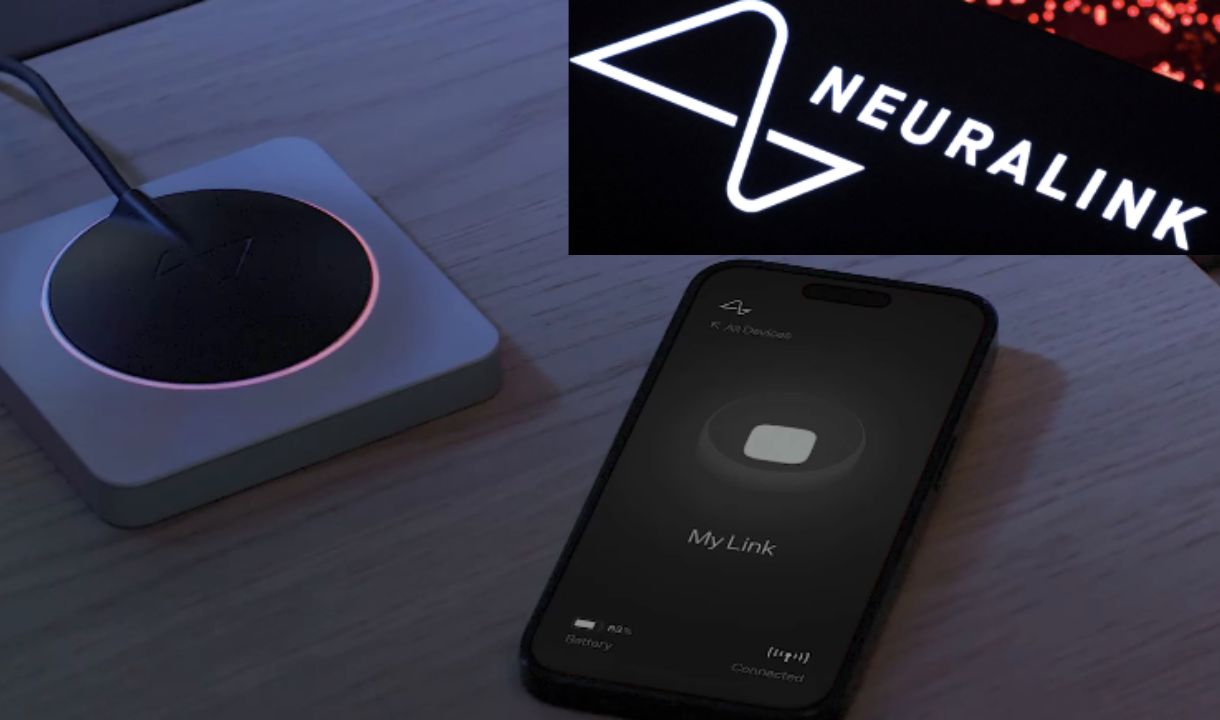How does Neuralink’s brain implant technology work
Neuralink’s brain implant technology is designed to create a seamless interface between the human brain and computers, allowing for direct communication through thought. Here’s how it works:
Core Components of Neuralink’s Technology
- Brain-Machine Interface (BMI): Neuralink aims to develop a sophisticated brain-machine interface that can restore sensory and motor functions in individuals with neurological disorders. The core of this technology involves a device implanted in the brain, which utilizes flexible, thin electrode “threads” to monitor and interpret neuronal activity.
- Electrode Threads: Each device can contain thousands of electrodes—up to 3,072 in some arrays—distributed across multiple threads. These threads are designed to be minimally invasive, allowing for precise insertion into specific brain regions while avoiding blood vessels. This precision is achieved using a specialized robotic system that can insert multiple threads quickly and accurately, with the ability to target areas of interest in the brain.
- Data Processing: The electrodes detect electrical signals generated by neurons, which are then converted into digital data. This data is processed in real-time, allowing users to control devices, communicate, or even play video games using only their thoughts. The processed signals can be visualized through an application, enabling users to observe their neural activity.
- Wireless Communication: The implant is designed to communicate wirelessly with external devices, eliminating the need for cumbersome wires that could impede movement. A single USB-C cable can provide full-bandwidth data streaming, capturing signals from all channels simultaneously.
Applications and Future Potential
Neuralink’s technology has a wide range of potential applications:
- Restoration of Movement: The primary goal is to enable individuals with paralysis to regain control over their limbs or prosthetic devices through thought alone.
- Enhanced Communication: The technology could facilitate communication for individuals with speech impairments by translating thoughts into text or speech.
- Cognitive Enhancements: Long-term visions for the technology include enhancing memory and cognitive functions, potentially allowing for a form of “technological telepathy.”
- Integration with AI: Elon Musk has suggested that Neuralink could lead to a symbiotic relationship between humans and artificial intelligence, enhancing human capabilities and experiences.
Current Status and Future Directions
Neuralink has conducted successful tests in animals and has recently begun human trials. The company continues to refine its technology and aims to address safety and efficacy concerns through rigorous testing and regulatory approvals. As advancements continue, the hope is to make this technology widely available, transforming the lives of individuals with neurological conditions and potentially reshaping human-computer interaction.
What are the main components of Neuralink’s brain implant device
Neuralink’s brain implant device, known as the “N1 sensor”, consists of several key components that enable its functionality:
Electrode Threads
- The device uses thin, flexible electrode “threads” that are implanted into the brain.
- Each thread contains many electrodes – up to 3,072 electrodes distributed across 96 threads in the latest version.
- The threads are designed to be minimally invasive and can target specific brain regions with micron precision while avoiding blood vessels.
Neurosurgical Robot
- Neuralink has developed a specialized robotic system capable of inserting six threads (192 electrodes) per minute with high accuracy.
- The robot allows for precise implantation of the threads into the brain.
Implantable Package
- The electrode array is packaged into a small, coin-sized implantable device measuring less than 23×18.5×2 mm.
- The package contains custom chips for low-power on-board amplification and digitization of neural signals.
Wireless Communication
- The implant communicates wirelessly with external devices, eliminating the need for wires.
- A single USB-C cable can provide full-bandwidth data streaming from the device, recording from all channels simultaneously.
Signal Processing
- The electrodes detect electrical signals generated by neurons, which are then converted into digital data.
- The data is processed in real-time, allowing users to control devices or communicate using their thoughts.
- The processed signals can be visualized through an application, enabling users to observe their neural activity.
These components work together to create a high-channel count, minimally invasive brain-computer interface with the potential to restore sensory and motor functions in individuals with neurological disorders
How does Neuralink’s neurosurgical robot work
Key Features of the Neuralink Neurosurgical Robot
- Precision Insertion: The robot is engineered to insert flexible electrode threads into the brain with exceptional accuracy. Each thread is extremely thin, comparable to the width of a human hair, allowing it to navigate the delicate brain environment while avoiding blood vessels and targeting specific brain regions.
- Image Stacking and Visualization: The robot utilizes a system of six different light modules that illuminate the surgical area at various wavelengths (405 nm, 525 nm, and 650 nm). This multi-spectral illumination helps create a detailed visualization of the brain’s surface, enabling the robot to accurately locate and insert the threads. Stereoscopic cameras enhance this capability by providing depth perception.
- Automated Surgical Process: The robot is designed to automate the entire surgical process, from making the incision and removing a small section of the skull to inserting the electrode threads and closing the incision. This automation aims to reduce the time and complexity of the surgery, improving overall safety and efficiency.
- Preselected Insertion Sites: The robot employs preselected insertion sites based on detailed brain mapping. It uses landmarks on the skull and depth tracking to ensure that the threads are inserted at the correct locations and depths, further minimizing the risk of damage to surrounding tissues.
- Testing and Validation: The robot has undergone extensive testing in animal models, achieving an average insertion success rate of 87.1%. This testing is crucial for validating the robot’s performance and ensuring its reliability before human applications.
- Real-Time Data Processing: Once the electrodes are implanted, the device is capable of recording, digitizing, and amplifying neural signals, which can then be processed in real-time. This allows the system to interpret brain activity and translate it into commands for external devices.
Future Implications
Neuralink’s robotic system represents a significant advancement in neurosurgery, particularly for brain-computer interfaces. By enhancing the precision and safety of electrode implantation, the robot could pave the way for broader applications in treating neurological disorders, restoring sensory and motor functions, and improving the quality of life for individuals with disabilities. As the technology develops, it holds the potential to transform not only surgical practices but also the way humans interact with machines.





